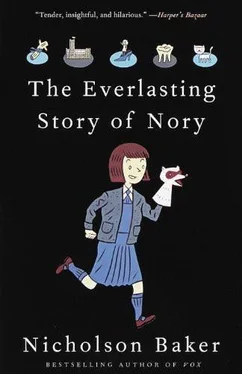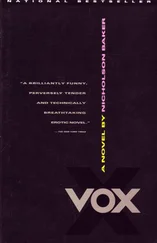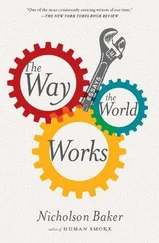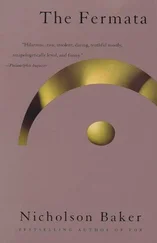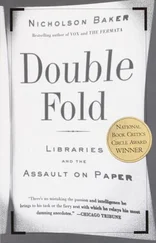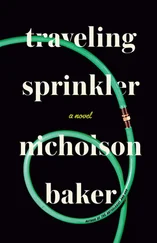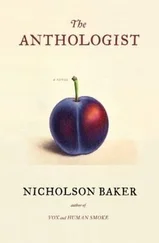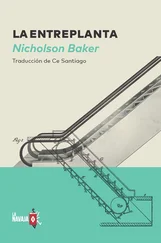Nowadays if you walked up to any statue in the whole Mary Chapel you saw that there were very few heads on them, so it was almost impossible to enjoy looking at them, since they were just pathetic little carved stone dolls about the size of Samantha dolls except not quite as plump, that stopped at the shoulders with no expressions whatever. The most important part of a doll, or a sculpture, or a drawing is, by all means, the face, because all your senses come from your face, except for your sense of touch, and even that is included on your face, if you think about it, since your skin can feel, and even your teeth can feel although it’s not exactly touch when your teeth are very sensitive to the pain of having a huge ball of ice-cream in your mouth, but it’s not taste either and it’s not touch, it’s another sense that only your teeth have, maybe, that dentists study. Sometimes you can have the feeling that your face is the only part of your body. Some people think there’s another sense in your chest, though, in the oystery place around your heart, and maybe it would be possible for you to think with your heart.
Littleguy was a good example of how important faces were in art, Nory thought, since he was just starting to make his first really good drawings of people. Before he had drawn two big circles and connected them with a line he called the driving bar to make the two wheels of a steam engine and he would very happily say, ‘That’s a steam engine!’ But now he was drawing the same two circles and the same line, but now they were the two eyes and the mouth and he would say, ‘That’s Juliana!’ Juliana was a girl who he was best-friends with in Palo Alto that he missed very much, even though he was going to school here in Threll, too. He was even drawing the legs now, the way little kids do, with the feet poking off in one direction and capturing the movement and not the other aspects that you learn later, like the knees.
A sad thing to think about was all the little heads from all the little statues lying on the floor of the Mary Chapel at the end of the day, after the nitwitted men had finished slamming around with their hammers and gone away. Maybe then an old nun would have come in by a side door with a broom made of straw bundled up. Shaking her head sadly, she would have swept up all the little bumbling stone angel-heads very carefully into a cold little pile, like a pile of brussels sprouts, and maybe she would have scooped them into a velvet bag and taken them out into the Bishop’s garden and planted them. Each little head would grow into a rare tulip or a lily or a conker tree in the spring, probably a lily since the lily was Mary’s special plant, especially devoted to her. The passion-flower is a vine that was Jesus Christ’s plant because you can see a cross inside it if you look at it close up. Someday Nory thought in a hundred years someone would go around the Bishop’s garden with one of those wands with the little halos at the bottom that they use to find things underground — a sculpture-detector — and discover the heads and dig them up. They would wash them off very gently with certain chemicals they use to do that kind of work, and glue them back in place one by one, so carefully you couldn’t even be able to tell where they had been broken off, and the whole place wouldn’t seem so destroyed. UHU was the name of the glue people used most often in England, but they pronounced it as ‘You-hoo,’ not ‘Uh-huh.’
If Nory grew up to be a stained-glass maker and not a dentist or a popup-book maker she would design each window in the Mary Chapel to tell the story not just of Mary’s life but of the digging of the stone for the Mary Chapel and the whole construction of it and the story of the people who came around one Thursday afternoon for no reason smashing the stained glass and the statues, and she would illustrate her own story of the woman who saved the heads and the flowering of the heads and the gluing back on of the heads with UHU. Then the place would be filled with the colors of the stained glass again and not seem cold at all. The idea of the heads growing up out of the ground wasn’t her own idea. It came from something they talked about in Classics class, the planting of an army out of teeth by Jason.
Now it was almost all clear glass in the Lady Chapel, in little square pieces going all the way up each window, and near the bottom of each window it said a name, like ‘Lord Chinparm’ or ‘Lloyd’s Bank’ or ‘Tesco.’ Tesco was the name of one of the food stores in England. There was Tesco and Waitrose and Asda and Safeway. Safeway was exactly the same name as in America. It was a good name for a supermarket because it gave you the idea of very calm smooth aisles of food that were so wide that you would never have an accident with another shopping cart and would always be able to buy your groceries quickly and safely. Each window of the Mary Chapel had a name on it because that was who originally gave money to put up that piece of transparent stained glass, or rather unstained glass. So now it just said TESCO, plain and simple, with no picture of Mary, not of Adam and Eve, not of Solomon or the ark or Jonah or Jesus Christ going down into H-E-double-hockey-stick.
So this is what happened to a visitor now. You went in and looked around, and thought, ‘Hmmm.’ You might not want to look at the headless sculptures, because you didn’t want to think about people doing that with hammers each by each, so you looked up at the glass, and then you saw LLOYDS BANK and you thought, ‘Oh, right, that reminds me, I need to get some money at the cash machine,’ and you turned around and walked out. Or you saw TESCO and you thought, ‘Oh, right, I need to get some brussels sprouts and some dwarf cauliflower for dinner,’ and you turned around and walked out. You didn’t necessarily think of how the Virgin Mary protected her son because she loved him. She would have died for him, as any mother would. That’s why she was so important! She would have died for her son just because she loved him so infinitely much, even if he hadn’t been Jesus Christ but just simply her own child — but the way the Catholic religion had adjusted the story a little was that it had her son dying up on the cross out of love for the world, to save it, as if it was his dear child. His own personal dying was a symbol for the kind of love that Lady Mary had for him. Long ago it would have been a much, much more Mary-Mother-of-Goddish sort of building when the stained glass was there, because the colors would be red and blue and you might feel you were in a humongous stone kangaroo pouch. There is such a thing as warm colors and cold colors, so that even if a place is cold in a temperature sort of sense it can be quite heartwarming. Though your heart is always fairly warm anyway because think how much exercise it’s getting.
Once at Christmastime when she was seven, Nory made a nativity scene using the miniature baby from Babysitter Barbie as the Baby Jesus and dressing one of her Barbies in a blue dress with a crown as the Virgin Mary and then arranging the Three Wise Barbies, one blond, one dark-haired, and one African-American, in front with pipe cleaners decorating their heads and show that they’d come from foreign lands. The Three Wise Barbies couldn’t kneel, so they had to kind of lie there near the gifts they brought, which were in little Polly Pocket suitcases. But that was sensible because in Roman days people very often ate dinner lying on the couch.
43. A Talk with Mrs. Thirm
So that was what Nory did in Religious Studies, drew the Virgin Mary. This made a little bit of a strange comparison with History, where they were still busy discussing the Aztecs and investigating the way the Aztecs sacrificed their people in order to feed the blood-red sunsets. There was a picture of them sacrificing in the textbook. First of all — and Nory thought that it was good of them to do this, at least — they made the person who was going to be sacrificed very drunk, so drunk he almost fell asleep waiting in line to be killed. Then they held both his legs — two people holding his legs and one person holding his arms. In other words, one person holding one leg, the other person holding the other leg. There was one person in the middle, on one side, who had a spear and a skull on his outfit. His hand was all red from killing people and he held a sword that was all red, and his sleeves were soaked with blood to the elbows. There was a wooden block that they had the person lie on. Blood was dripping down the stairs they had to walk up, slobbed all over the place, because what they did in order to sacrifice them was to cut their heart out while it was still beating.
Читать дальше
